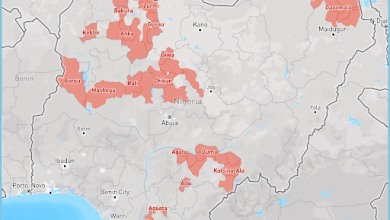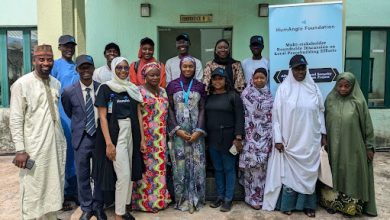
A new demographic of teenagers is becoming dominant in the cadres of fighters populating the terror troops in the Lake Chad Basin.
Teenage and child soldiers phenomenon has become the new normal in the camps and formations. And the development is seriously impacting the terror group’s strategies and effectiveness, HumAngle has learned.
The two major terror groups, Jama’atu Ahlis Sunna Lidda’awati Wal-Jihad and the Islamic State’s West Africa Province (ISWAP), have issued threats in the past months against individuals and organisations resident in cities outside the war theatres.
Weeks ago, Boko Haram leader, Abubakar Shekau, said any attempt by the French media to publish “discriminatory” information would carry consequences, ending the statement with an ominous warning: “watch out.”
Earlier in September, an internal memo of the Nigeria Customs Service in which the agency warned of the discovery of Boko Haram terrorist cells in the vicinity and neighbourhoods of the Federal Capital Territory (FCT) went viral on social media.
“Further reports have it that they are planning to attack some selected targets within the territory,” the document alerted.
Despite the threats, there is evidence that the terror group has not launched any major attack in any city within the country in years. A timeline of its activities shows that it has instead focused on attacking villages, travellers, and military camps in front line states.
Perhaps, this highlights why the Nigerian government argued that the group had been “technically defeated.” They are no longer capable of “articulated conventional attacks on centres of communication and populations,” President Muhammadu Buhari said in 2015.
But information reaching HumAngle indicates that it may be hasty to credit this trend entirely to the government’s counterterrorism efforts.
One Boko Haram deserter explained that the primary reason for the noticeable change in their insurgency strategy was that most of the older fighters have either quit the insurgency or been killed in battle. Those who resigned from the group now live in different parts of the country or have moved to neighbouring countries.
“In the current crop of fighters, you will find that about 80 per cent (of them) are between the ages of 10 and 20, and a lot of them grew up in the centre of the insurgency and inside the forest areas,” he said.
Officials of the Multinational Joint Task Force (MNJTF) recently observed that Boko Haram has stepped up its recruitment of child soldiers as a way to strengthen its hold on the region.
“Information on this disturbing development was brought in by human intelligence sources and corroborated by concerned individuals and groups,” MNJTF spokesman, Colonel Timothy Antiga, disclosed. Borno State governor, Babagana Zulum, raised a similar alarm on Thursday, blaming the trend on increasing unemployment rates.
The implication of the group’s recruitment pattern is that the older fighters who are more adept at planning and who have a deeper understanding of the cities and the urban layouts are mostly few and far in between in the fighting cadres. One reason for this shift in demographic is the preference of the Boko Haram leadership for young foot soldiers who can easily be controlled.
“If you need to attack Gombe and Abuja, you need an older fighter who has lived in those cities and has an understanding of how they work, and then begin to do the planning,” Boko Haram ex-fighter told HumAngle.
“But then, the majority of the new sets of leaders and commanders know nowhere other than the Sambisa forest and the islands in Lake Chad. They have minimal contact with and knowledge of urban areas, and this is an impediment.”
Unable to plan the invasion of cities with as much precision as it previously was capable of, the terror group has steadily depended on guerilla warfare and executing ambushes on military convoys.
However, HumAngle understands that Boko Haram has, in the last three months, been toning down its hostility towards deserters, those who are not members of its inner fold, and those who identify as members but who live in urban areas.
Experts who have followed the evolution of the insurgency told HumAngle that the elements who have deserted and are living in the various cities could on serious ideological grounds be tapped on to act as bridges in harming cities.
In previous years, the terror group’s extreme position on takfir (ex-communication) created a wedge between its leadership and many of its members. Those living in urban communities were considered weak because they had not migrated to the group’s Daulah (territories governed by religious rules).
It was, in fact, the takfiri ideology, which justified the killing of civilians and Muslims, that triggered the breakaway of Ansaru in 2012 and ISWAP in 2016. The group, however, appears to have since embraced a shift in strategy that focuses on state targets, rather than civilians.
Sources familiar with the operations of Boko Haram informed this paper that most of its new recruits, possibly up to 90 per cent, were uneducated villagers. Though it still drafts in people who received a considerable formal education, members with this quality are rare.
“Don’t forget that a lot of the teenagers or those in their early twenties, within the ranks of Boko Haram, were either born during or grew up with the insurgency,” one source said. “They know nothing but war and violence. They do not understand the language of dialogue and mercy.”
Support Our Journalism
There are millions of ordinary people affected by conflict in Africa whose stories are missing in the mainstream media. HumAngle is determined to tell those challenging and under-reported stories, hoping that the people impacted by these conflicts will find the safety and security they deserve.
To ensure that we continue to provide public service coverage, we have a small favour to ask you. We want you to be part of our journalistic endeavour by contributing a token to us.
Your donation will further promote a robust, free, and independent media.
Donate HereStay Closer To The Stories That Matter




